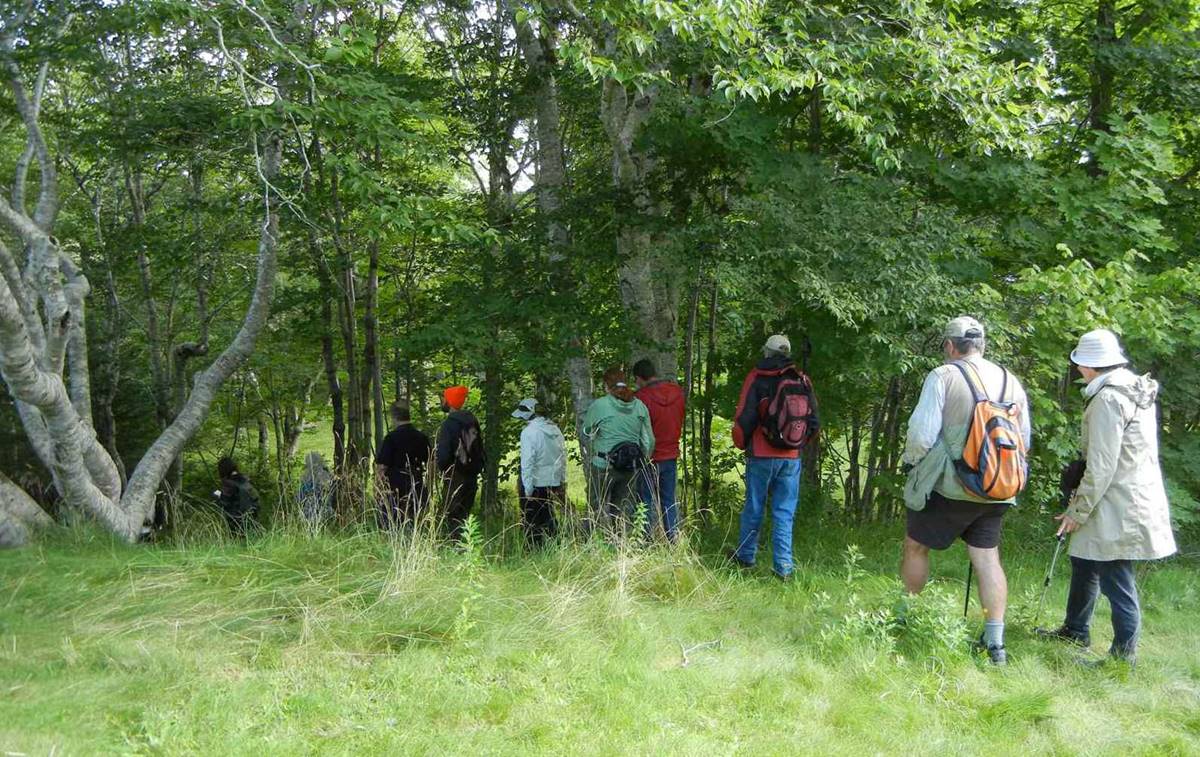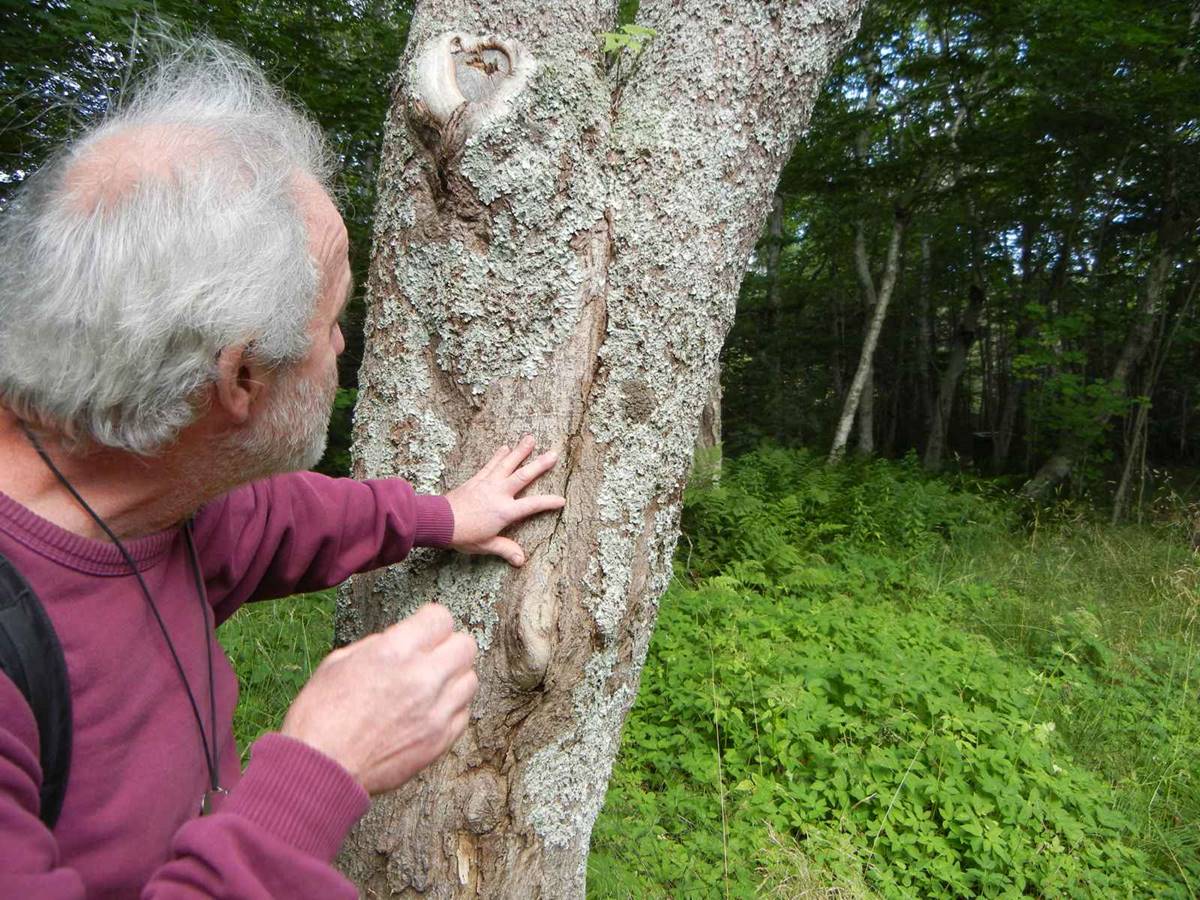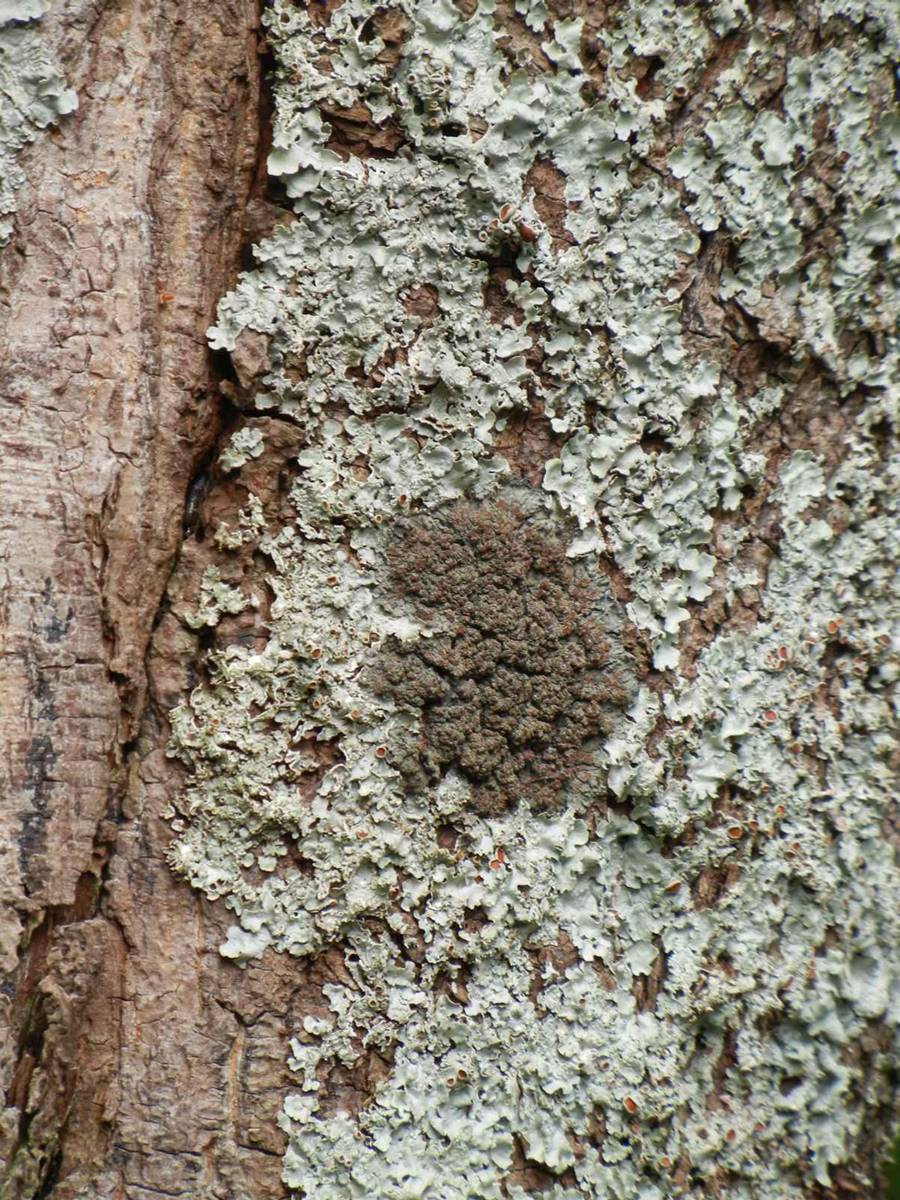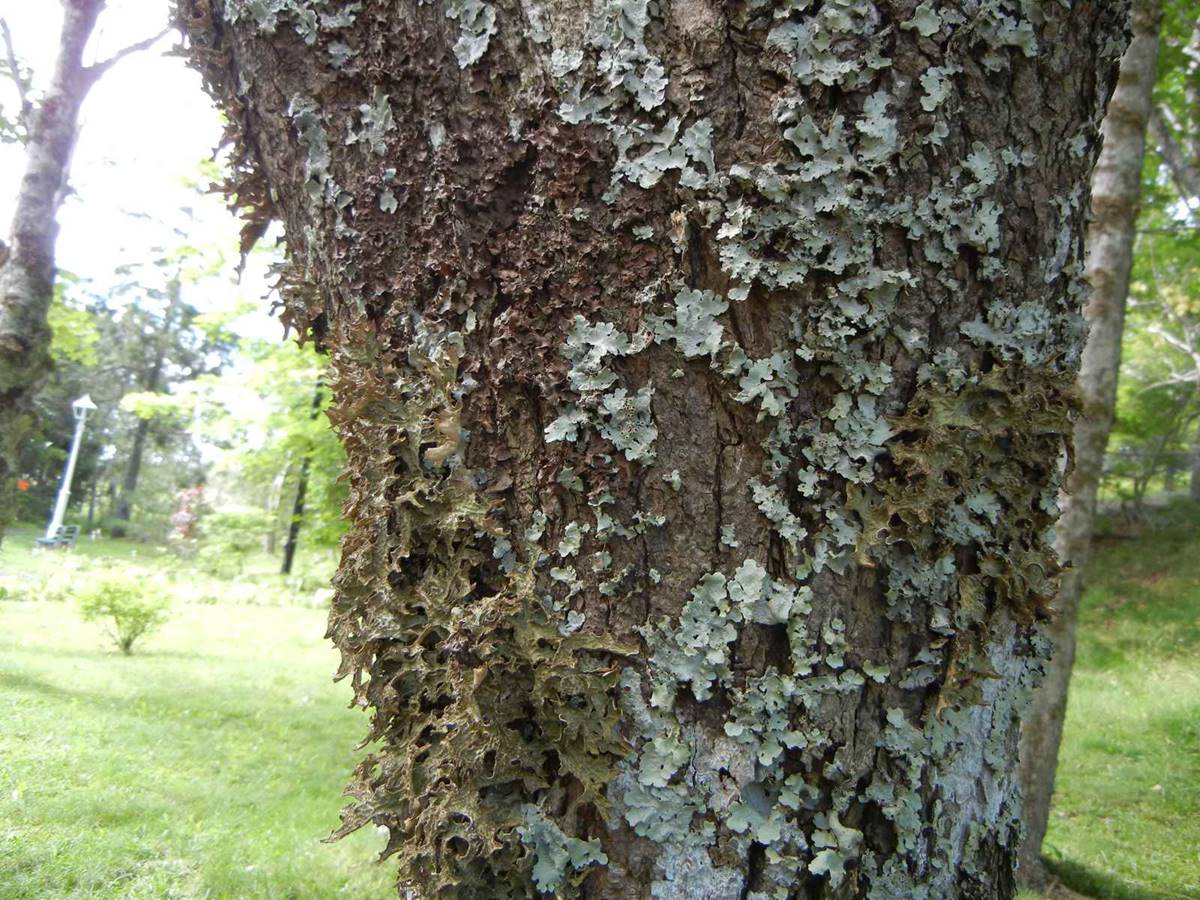Saturday, August 20th was a fine day at Sir Robert Bond Park in Whitbourne. Sunshine, a light breeze, and cool morning temperatures made for perfect field conditions. Sixteen enthusiasts joined naturalist Mac Pitcher to view the many old trees and the diverse and abundant lichens growing on them. The trip had been advertised as featuring some 20 species of lichens, some rare, and, although no one kept a count, we were not disappointed.

The star attraction was the Blue Felt Lichen – Degelia plumbea (or Pectenia plumbea , according to the revision proposed by Ekman, et al. 20141). This rare lichen is found elsewhere in Newfoundland growing on Yellow Birch, but in this park it has taken well to Norway Maple (Acer platanoides), one of many European tree species introduced to the site by Sir Robert Bond in the late 19th and early 20th century.


In their 2006 Degelia lichen inventory for the park, Pitcher and Cbislett reported this species as occurring on Norway Maple, Hawthorn, Trembling Aspen, and European Birch2.
Blue Felt Lichen, along with the Boreal Felt Lichen (Erioderma pedicellatum), is listed as “Vulnerable” in the Newfoundland and Labrador species at risk registry. Boreal Felt lichen is designated “Of Special Concern” on the Canada SAR registry, and the Committee on the Status of Wildlife in Canada (COSEWIC) has recommended such listing for Blue Felt Lichen.

While the “Lichen Forest” was the main attraction for our field trip, there were plenty of other things to observe and discuss: orchids, Phantom Crane Flies, a juvenile Wood Frog, common loons on Junction Pond, and of course the history of the park. Sir Robert Bond Municipal Park is only an hour’s drive from St. John’s and well worth visiting for a few hours.
– John D. Jacobs
1The Lichenologist 46(5): 627–656.
2 The Osprey 37(2): 55-57.
Commentary and Photos by John Jacobs, Nature NL. Our thanks to Mac Pitcher for guiding us and confirming the labeling of the images.
